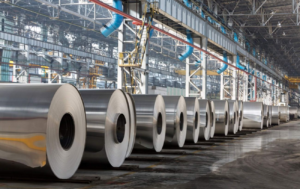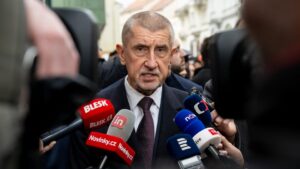
On January 1, 2026, Bulgaria officially switched to the euro and became the 21st country in the eurozone. For the Bulgarian economy, this step is largely institutional in nature: for many years, the lev was tightly pegged to the euro through the currency board, so the market did not expect a sharp change in the monetary regime. At the same time, the country will get a seat on the ECB’s governing bodies and deeper integration into the eurozone’s financial system, according to the Experts Club information and analytical center.
Maksym Urakin, founder of the Experts Club analytical center, believes that the effect of the transition will be determined by how quickly the authorities “knock down” inflation expectations among the population and businesses: “The euro itself does not make the economy richer overnight, but it reduces transaction costs and increases investor confidence. The key test in the first few months will be controlling price speculation and communicating clearly with consumers.”
The main domestic risk around which public debate in Bulgaria is centered is inflationary expectations and fears of price “rounding” in retail and services. Such fears traditionally accompany currency changes, even if the actual effect is usually limited in time and concentrated in the sector of daily household expenses.
After Bulgaria’s entry into the eurozone, six countries remain in the EU that do not use the euro: Sweden, Poland, the Czech Republic, Hungary, Denmark, and Romania.
According to Experts Club estimates, the expansion of the eurozone will be slow in the coming years, as each of these countries has its own “stop factors” — from political constraints to failure to meet convergence criteria and budget deficit problems.
In Poland, for example, the government has publicly stated that the country is “not yet ready” for the euro and considers the zloty to be an instrument of macroeconomic flexibility that has helped it weather past shocks.
In the Czech Republic, President Petr Pavel has called for more active movement towards the euro as a factor in trade and decision-making, but there is no political consensus on the timing in the Czech Republic.
In Hungary, Prime Minister Viktor Orbán, on the contrary, has stated several times that the country should not adopt the euro.
Sweden formally relies on the results of the 2003 referendum, when 55.9% of voters opposed the introduction of the euro.
Denmark, unlike the others, has a legally enshrined right not to introduce the euro (opt-out), confirmed by a referendum in 2000.
Experts Club notes that Romania is considered the next country after Bulgaria that is most likely to apply for the introduction of the euro. However, the actual timeline depends on inflation and the budget trajectory: the European Commission indicated in its convergence materials that Romania does not meet the conditions for adopting the euro, including the parameters of public finance sustainability and legal compatibility. The public guidelines in the Romanian discussion mention a target date of around 2029, but the timing may shift depending on economic indicators and fiscal adjustments.

The Experts Club analytical center has created a video analysis of global aluminum production in 1970-2024. Based on visual data from the video “Top 20 aluminum producers from 1970 to 2024” and confirmed statistical data for 2024, an overview of industry trends has been formulated.
Since the 1970s, primary aluminum production has gradually shifted from Europe and North America to Asia and the Middle East. At the dawn of the industry, Western Europe and the US accounted for a significant share of production. However, the following decades saw rapid capacity expansion in China, India, and the Middle East.
The video confirms that in 2024, the largest producer (China) controls about 60% of the world’s volume, while the top ten leaders account for more than 80% of production.
According to sources (Wikipedia, Visual Capitalist, NATO, World Population Review), aluminum production in the top ten countries in 2024 will look like this:
China — ~43 million tons.
India — ~4.2 million tons.
Russia — ~3.8 million tons.
Canada — ~3.3 million tons.
UAE — ~2.7 million tons.
Bahrain — ~1.6 million tons.
Australia — ~1.5 million tons.
Norway — ~1.3 million tons.
Brazil — ~1.1 million tons.
Malaysia — ~0.98 million tons.
Total global primary aluminum production in 2024 is estimated at approximately 72 million tons.
The world of aluminum production is becoming increasingly concentrated: China holds a dominant position, while other leading countries control a significant share. Countries with growing infrastructure, automotive, and construction sectors (India, Brazil, UAE) are showing dynamic growth.
The video is available on our YouTube channel –

On October 17, 2025, ProAgro Group will hold the fourth Ukrainian Livestock Summit (Ukrainian Livestock Summit 2025) in Kyiv, a leading industry platform for discussing current trends and prospects for the development of livestock farming, poultry farming, livestock product processing, and feed production, writes SEEDS.
Among the speakers at the summit will be Oksana Yurchenko, coordinator of animal health and food safety projects at the FAO Investment Center and representative of the educational platform AgriAcademy, who will present an analytical report on “Livestock farming in Ukraine: trends, challenges, and prospects.”
Oksana Yurchenko will present an overview of key trends in the livestock industry, including issues of staff shortages, the transformation of agricultural professions, the sector’s adaptation to the requirements of European integration, and the role of modern informal education in training a new generation of agribusiness specialists.
“Today, the livestock industry is facing a number of serious challenges, one of the key ones being an acute shortage of qualified personnel. Companies are actively looking for specialists, but it is becoming increasingly difficult to find them, while a new generation of farmers with a completely different vision and approach to work is entering the market. That is why it is extremely important to integrate distance learning into the daily activities of farms, making it an integral part of the production process. AgriAcademy is an effective tool that will motivate employees and help improve their professional level,” emphasizes Oksana Yurchenko.
During the summit, a promotional video about AgriAcademy will also be shown, highlighting the opportunities offered by certified free online education for farmers. The platform currently offers more than 30 practical courses, created in collaboration with leading universities around the world, companies in the agricultural sector, and industry experts in Ukraine.
Oksana Yurchenko’s presentation is intended not only to assess the state of the livestock sector, but also to show how modern educational initiatives contribute to strengthening the human resources potential of Ukrainian agribusiness in the context of post-war recovery and European integration.
This is a free online learning platform created on the initiative of the EBRD as part of its food security support program in Ukraine. Its goal is to strengthen the competitiveness and sustainable development of agriculture, which has suffered significant losses due to the war.
The platform’s creation and management (including course development, training tours, etc.) is supported and funded by the EBRD, as well as:
AgriAcademy, ANALYTICS, livestock farming, market review, ProAgro Group, Ukrainian Livestock Summit 2025

In the Czech Republic, Andrej Babiš and his ANO party won the parliamentary elections on October 3–4, 2025, receiving about 34.7% of the vote. Petr Fiala’s party, which previously led the Spolu coalition, came in second with ~23.4% of the vote. The election results were analyzed by the Experts Club information and analytical center.
Babiš faces a difficult task in forming a coalition: his party did not win a single-party majority, and cooperation with right-wing and populist parties — the SPD (Freedom and Direct Democracy) and the Motorists movement — is being considered.

Babiš has promised to increase social benefits, reduce taxes, and focus more attention on intra-European issues. He has repeatedly criticized substantial military and material assistance to Ukraine and promised to review the Czech Republic’s participation in the initiative to supply ammunition to Kyiv. At the same time, Babiš is trying to position himself as a pro-European politician, although his rhetoric often aligns with nationalist and Eurosceptic forces.
Several possible consequences for Ukraine can be identified from the results of the Czech elections:
1. Reduction of preferential support and military aid. The new government may seek to reduce the Czech Republic’s contribution to collective assistance to Ukraine or review its financial commitments, especially regarding the ammunition supply program. Babiš has already stated that he intends to “reduce support.”
2. A change in diplomatic tone. The Czech Republic may shift the focus of its foreign policy away from confrontation with Russia, especially if the government seeks more pragmatic relations within the EU and Central Europe.
3. Increased influence of right-wing and populist movements in the region. Babiš’s victory could stimulate the growth of nationalist and Eurosceptic parties in neighbouring countries and increase tensions over Kyiv’s policies in Central Europe. The Czech Republic may join the camp of countries that criticise sanctions or delay common European decisions.
4. Risks for Ukraine’s integration. The Czech Republic’s change of course could affect support for Ukraine within the EU, influence “stabilization funds,” and lobbying for European support at the pan-European level.
The current changes in the Czech Republic are a key indicator of how quickly the political landscape of Central Europe is changing. It is important for Ukraine to monitor the format of the coalition that will be formed and the foreign policy program of the new Czech cabinet.
Earlier, the Experts Club information and analytical center called the elections in the Czech Republic one of the most important in the world in 2025. A video about elections around the world is available on YouTube:

The Experts Club Information and Analytical Center analyzed updated data on Ukraine’s foreign trade volumes for the first half of 2025, published by the State Statistics Service of Ukraine. The analysis is based on official customs statistics and covers 49 of Ukraine’s main trading partners from all continents. The study revealed key trends in foreign economic relations that demonstrate the depth of the country’s international integration.
China remains Ukraine’s largest trading partner, with a total trade volume of nearly US$9 billion. This is more than three times higher than the figures for any individual European country. Poland ranks second with a result of over US$6 billion, demonstrating its stable role as the main European hub for Ukrainian exports and imports. Germany ranks third with a volume of US$4.28 billion.
Turkey ($4.25 billion) and the US ($2.86 billion) also made it into the top five, reflecting the broad geography of Ukraine’s trade relations.
European countries traditionally play a leading role in Ukraine’s foreign trade. Among them, in addition to Poland and Germany, Italy, the Czech Republic, Bulgaria, Hungary, and Romania are worth noting — all of them are among the top 10 partners. High indicators testify not only to the volume of trade, but also to the stability of logistics and production chains in the region.
This also confirms the gradual reformatting of Ukraine’s foreign trade orientation towards EU markets, particularly after the introduction of a duty-free regime, accession to the single customs space, and reorientation from traditional post-Soviet markets.
Among Asian countries, China remains the undisputed leader, retaining its strategic importance as a market for raw materials and a source of industrial imports. Turkey, although part of the Eurasian space, is actively strengthening its position in trade thanks to its flexible policy and developed logistics through the Black Sea.
Among other Asian players, the Republic of Korea, Japan, and India are notable for their presence, gradually increasing trade volumes with Ukraine, especially in the high-tech and pharmaceutical segments.
The United States remains Ukraine’s most important partner in the Western Hemisphere. Despite its geographical distance, the US is among the top five trading partners with a volume of over $2.85 billion. This testifies to deep economic interaction that complements political and defense partnerships.
Brazil and Mexico are also represented in the overall ranking, demonstrating growth in trade volumes, primarily in the agricultural and industrial goods segments.
They are increasingly appearing in Ukraine’s trade balance. In particular, Algeria, Egypt, Tunisia, and Libya show stable demand for Ukrainian grain, metallurgical products, and machine-building products. At the same time, the potential of African markets for Ukrainian exports remains significant and can be realized under conditions of expanded logistics routes and political stability.
Top 10 trading partners of Ukraine in January–June 2025
No. Country Trade volume (USD million)
1 China 8,996
2 Poland 6,043
3 Germany 4,279
4 Turkey 4,249
5 United States 2,859
6 Italy 2,384
7 Czech Republic 1,641
8 Bulgaria 1,539
9 Hungary 1,526
10 Romania 1,499
“The latest foreign trade data demonstrate not only the geographical diversification of Ukraine’s partners, but also a clear focus on integration into the European and global markets. Despite the difficult security situation, Ukrainian business continues to expand into international economic chains, especially in the fields of agricultural products, metallurgy, and machine building. Significant growth in trade with EU countries and the US, as well as strong cooperation with China and Turkey, show that Ukraine has not lost its ability to be an active player in the global market,” says Maxim Urakin, founder of Experts Club and candidate of economic sciences.
Data for the first half of 2025 indicate that Ukraine’s foreign economic relations remain geographically diverse. The EU remains a reliable economic partner, China retains its position as the No. 1 global player, and North American and Asian countries are strengthening their roles. Africa is a promising direction that requires strategic attention.
Analyse, ANALYTICS, ECONOMICS, EXPERTS CLUB, Handel, TRADE, URACIN, URAKIN, WIRTSCHAFT

The Experts Club Information and Analytical Center conducted a study on plum cultivation (production) worldwide. A video analysis of the study is available on YouTube.
According to the results of 2023, Ukraine ranked 13th in the world in terms of plum production, according to a video graphic based on official data from the FAO (Food and Agriculture Organization of the United Nations).
The video review published by Experts Club shows the dynamics of plum production in 1991–2023 by country. According to statistics, the leading positions are held by:
TOP 5 plum producing countries in 2023:
China — the undisputed leader, with almost 7 million tons,
Romania
Chile
Serbia
Turkey
The best indicator for Ukraine in recent years was 2021, when the country ranked 9th among the world’s top plum producers. In 2023, the plum harvest in Ukraine amounted to more than 160,000 tons. The main regions for plum production are Zakarpattia, Vinnytsia, Lviv, and Chernivtsi regions.
Plums are used both fresh and for processing: dried plums, jams, juices, and pastila.
Despite military risks and the occupation of part of its southern territories, Ukraine retains its status as an important producer of stone fruits in Eastern Europe.
Global data on the production of major crops for 2024 is currently being processed and will be available within a month.
For more details, see the video review at the link.
Experts Club is a platform for analytical video discussions, interviews, and reviews on key issues in economics, politics, medicine, security, and international relations. The project brings together leading experts, scientists, businesspeople, and public figures for in-depth analysis of current events.
The channel regularly features:
interviews with relevant specialists (economists, doctors, lawyers, diplomats),
expert panel discussions,
analytical videos and infographics (including those based on data from the UN, IMF, and FAO),
reviews of the global and Ukrainian economies.
The goal of the project is to form an independent expert community and develop a culture of analytics in Ukraine.
The Experts Club YouTube channel is available at: youtube.com/@ExpertsClub